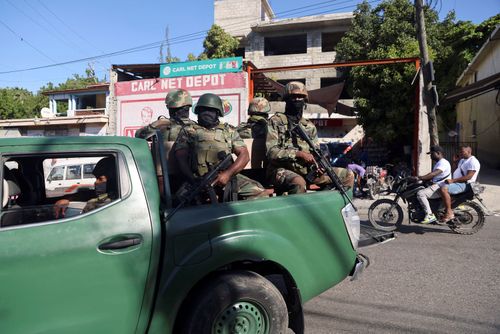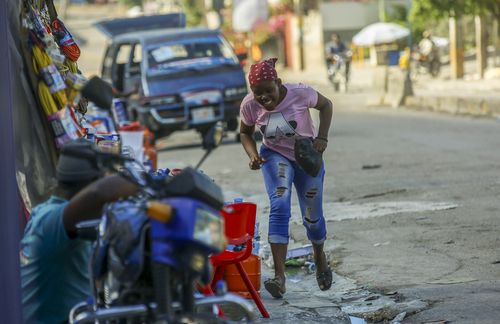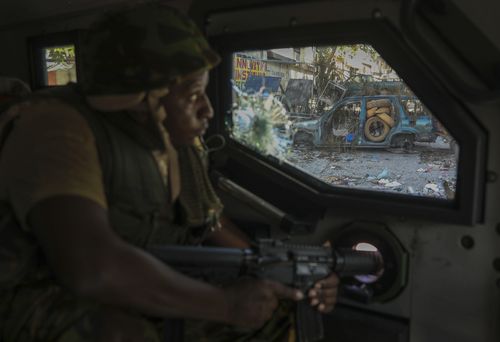Life under capitalism is the experience of horror — and there is no better guide to it than Karl Marx.

Richard Haidinger / Flickr
Like the seemingly omnipotent antagonist in any given horror movie, capitalism is not just unstoppably horrific. It horrifies in its apparent unstoppability.
“The runaway world,” argues Chris Harman in a book on zombie capitalism, “is the economic system as Marx described it, the Frankenstein’s monster that has escaped from human control; the vampire that saps the lifeblood of the living bodies it feeds off.”
The diagnosis invites the big question: how do we orient ourselves politically within a social dynamic whose very essence is horror?
This is a question taken up by Karl Marx himself, whose writing overflows with tropes and figures born of the gothic, and it is one worth revisiting for Halloween.
“Capital,” Marx tells us, “is dead labour, that, vampire-like, only lives by sucking living labour, and lives the more, the more labour it sucks. The time during which the labourer works, is the time during which the capitalist consumes the labour-power he has purchased of him.” Or, in an altogether more grotesque formulation:
The capital given in exchange for labour-power is converted into necessaries, by the consumption of which the muscles, nerves, bones, and brains of existing labourers are reproduced, and new labourers are begotten.
In these two sentences, both taken from the only published book that Marx himself brought to completion, sounds more like Mary Shelley than a work of political economy, summoning predatory vampires, undead monsters, and dismembered bodies.
Both Dracula and Frankenstein have been read as a tales of capitalism. The vampire is, of course, a capitalist hellbent on imperial expansion:
There was a mocking smile on the bloated face which seemed to drive me mad. This was the being I was helping to transfer to London, where, perhaps, for centuries to come he might, amongst its teeming millions, satiate his lust for blood, and create a new and ever-widening circle of semi-demons to batten on the helpless. The very thought drove me mad. A terrible desire came upon me to rid the world of such a monster.
Frankenstein’s monster is, by contrast, the zombified embodiment of proletarian retribution:
All, save I, were at rest or in enjoyment: I, like the arch-fiend, bore a hell within me; and, finding myself unsympathised with, wished to tear up the trees, spread havoc and destruction around me, and then to have sat down and enjoyed the ruin.
But unlike the novels of Stoker and Shelley, Marx’s account is not only gothic. His descriptions of a blood-drenched and gore-caked mode of production are prescient of horror as we see it in more recent cinema. Whatever these descriptions lack in the sense of morality shared by gothic novelists they make up for in cold rationality.Capitalist accumulation is, as Marx knows, a crime whose most obvious analogue is cannibalism.
Marx’s horrors are irredeemable and absolute. When he insists that capitalism is the mode of production that “comes dripping from head to foot, from every pore, with blood and dirt,” he really commits himself, as a gifted writer and a master-stylist, to conveying specifically that kind of horror.
Elsewhere in Capital, when the vampire image returns, narrative emphasis shifts from the bourgeois predator to the exploited worker, and specifically to the worker’s obliterated body:
It must be acknowledged that our labourer comes out of the process of production other than he entered. In the market he stood as owner of the commodity “labour-power” face to face with other owners of commodities, dealer against dealer. The contract by which he sold to the capitalist his labour-power proved, so to say, in black and white that he disposed of himself freely. The bargain concluded, it is discovered that he was no “free agent,” that the time for which he is free to sell his labour-power is the time for which he is forced to sell it, that in fact the vampire will not lose its hold on him “so long as there is a muscle, a nerve, a drop of blood to be exploited.”
The vampire reveals itself only when it is already too late, when the façade of legal niceties turns out to be an evil, Faustian pact, inescapable until the death of either party.
Stylistically important is that quoted material at the end, taken from a description made elsewhere by Friedrich Engels. The quotation from Engels confirms the organic substance of capital, its own expropriated lifeblood, is the insides of the worker.
While Marx frequently draws on the patently gothic imagery of vampires and werewolves, specters and gravediggers, here we can see that his accounts of capital also acquire a taste for human viscera, with sentences chewing their way through bodily gristle:
We may say that surplus value rests on a natural basis, but this is permissible only in the very general sense, that there is no natural obstacle absolutely preventing one man from disburdening himself of the labour requisite for his own existence, and burdening another with it, any more, for instance, than unconquerable natural obstacles prevent one man from eating the flesh of another.
Capitalist accumulation is, as Marx knows, a crime whose most obvious analogue is cannibalism. Born into the wage-relation we are not human subjects. We are only our capacity to work, which means serving up our variously muscular, nervous, and cerebral organs — and consuming those of our friends and families, as well as those of complete strangers.
Gothic descriptions like these are not merely decorative. Instead, they get to the very essence of life under capitalism. They remind us how bodies and brains are mutilated into commodities. Literally, we need only think of the deformations, injuries, and fatalities caused by strained working conditions at every level of capitalist industry, from neurological trauma through to heart attacks, right down to broken bones, amputated limbs, and mass deaths.
Figuratively, every minute and every hour spent in wage labor is another minute and another hour in which our bodies are wired to a vast machine that only lives by draining our life substances.
Life under capitalism is the experience of horror, the irreversible liquefying of human substance and its necrophagic consumption. Like the grim fate of the victims in any given horror film, whose bodies are obliterated beyond all recognition and so frequently ingested by other humans, once our labor succumbs to value that transformation is utterly irreparable. So reflects poet Keston Sutherland in a brilliantly nauseating essay on Marx’s jargon: “All that is meat melts into bone, and vice versa; and no effort of scrutiny, will or heated imagination, however powerfully analytic or moral, is capable of reversing the industrial process of that deliquescence.”
The lesson can be put this way: we all inhabit the same horror story and we should all be intensely revolted by this. But, even if we cannot undo what has already been done, that revulsion might still be a catalyst for revolution. Perhaps this is what Marx was trying to teach us all along with his unique brand of gothic horror.
Mark Steven is a lecturer in literature at the University of Exeter. He is the author of Red Modernism: American Poetry and the Spirit of Communism and Splatter Capital.







